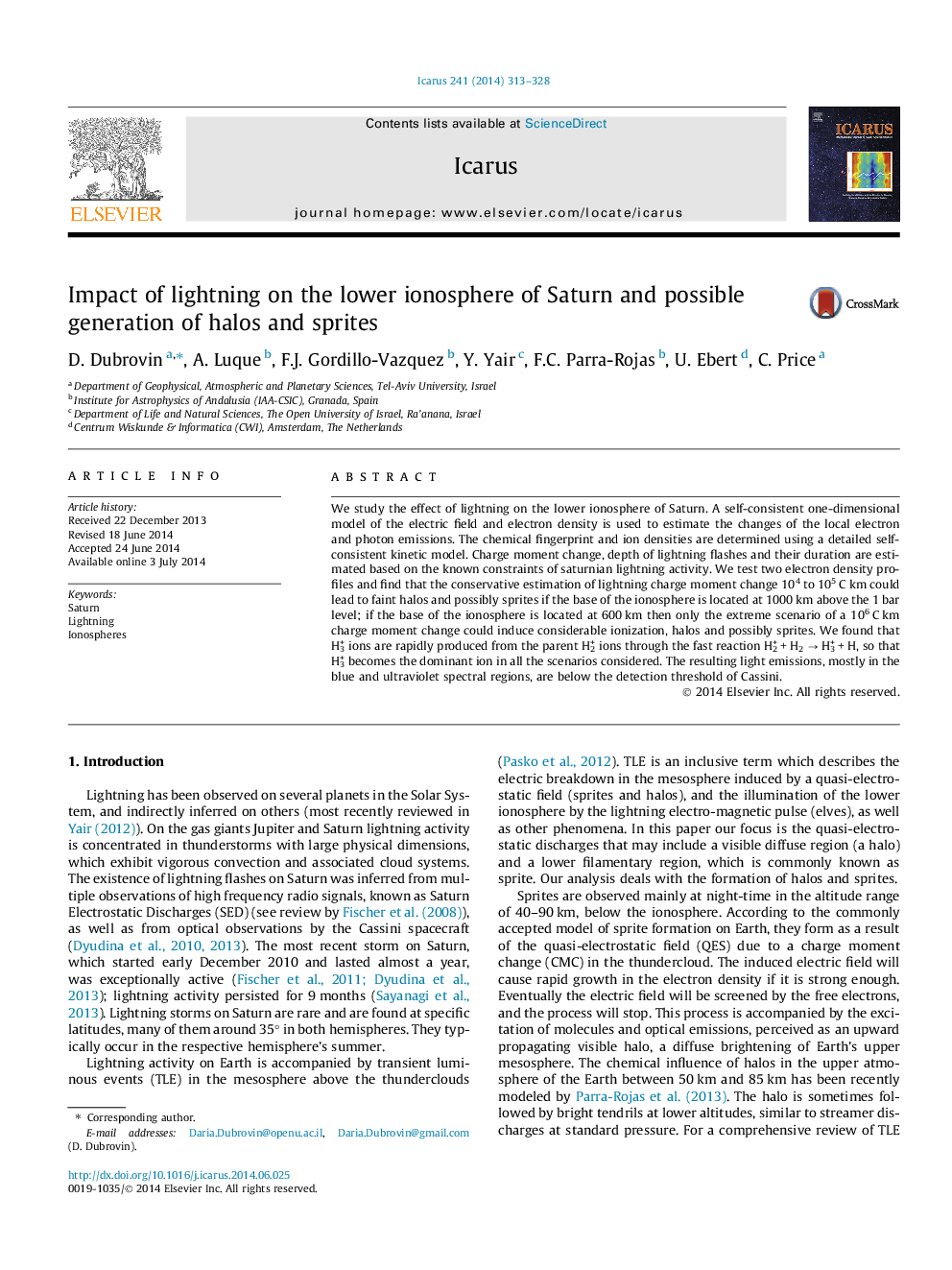| Article ID | Journal | Published Year | Pages | File Type |
|---|---|---|---|---|
| 8137807 | Icarus | 2014 | 16 Pages |
Abstract
We study the effect of lightning on the lower ionosphere of Saturn. A self-consistent one-dimensional model of the electric field and electron density is used to estimate the changes of the local electron and photon emissions. The chemical fingerprint and ion densities are determined using a detailed self-consistent kinetic model. Charge moment change, depth of lightning flashes and their duration are estimated based on the known constraints of saturnian lightning activity. We test two electron density profiles and find that the conservative estimation of lightning charge moment change 104 to 105 C km could lead to faint halos and possibly sprites if the base of the ionosphere is located at 1000 km above the 1 bar level; if the base of the ionosphere is located at 600 km then only the extreme scenario of a 106 C km charge moment change could induce considerable ionization, halos and possibly sprites. We found that H3+ ions are rapidly produced from the parent H2+ ions through the fast reaction H2+ + H2 â H3+ + H, so that H3+ becomes the dominant ion in all the scenarios considered. The resulting light emissions, mostly in the blue and ultraviolet spectral regions, are below the detection threshold of Cassini.
Keywords
Related Topics
Physical Sciences and Engineering
Earth and Planetary Sciences
Space and Planetary Science
Authors
D. Dubrovin, A. Luque, F.J. Gordillo-Vazquez, Y. Yair, F.C. Parra-Rojas, U. Ebert, C. Price,
